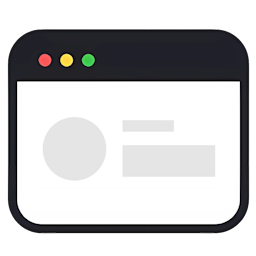
Skeleton
Skeleton screens are a user interface design technique used in frontend development to improve perceived loading times and enhance user experience during content loading. Here’s an overview of skeleton screens and their role in frontend development:
What Are Skeleton Screens?
Skeleton screens are visual placeholders that appear while the actual content of a webpage or application is loading. They mimic the layout and structure of the final content, typically using light gray boxes or shapes to represent various elements such as text, images, and other UI components[1][2].
Purpose and Benefits
Skeleton screens serve several important purposes in frontend development:
-
Improved Perceived Performance: By providing an immediate visual response, skeleton screens create the illusion of faster loading times[1][3].
-
Enhanced User Engagement: Users are given a preview of the page structure, keeping them engaged during the loading process[6].
-
Reduced Cognitive Load: Gradually revealing content helps users process the page structure before being presented with all the information at once[1].
-
Lower Bounce Rates: Users are less likely to abandon a site due to perceived slow loading times when skeleton screens are used[6].
Types of Skeleton Screens
There are three main types of skeleton screens:
-
Static-content and -image skeleton screens: The most common type, resembling wireframes with light gray boxes representing content and images[1].
-
Animated skeleton screens: Incorporate motion effects to indicate ongoing loading[3].
-
Frame-display skeleton screens: Show the outline or frame of the content before filling in the details[1].
Implementation
Implementing skeleton screens in frontend development typically involves:
-
Markup Structure: Creating HTML elements that serve as placeholders for the actual content[7].
-
Styling with CSS: Using CSS to style the placeholders to match the final content design[7].
-
JavaScript (optional): Adding animations or transitions to enhance the loading experience[7].
-
Content Loading: Progressively replacing placeholders with actual content as it becomes available[7].
Best Practices
When implementing skeleton screens in frontend development:
- Ensure the skeleton design matches the overall website or app design for a seamless transition[6].
- Use skeleton screens for larger container-based components rather than small UI elements[3].
- Maintain consistency in layout and structure between the skeleton and the final content[6].
- Optimize CSS and JavaScript to keep the skeleton screen lightweight and fast-loading[6].
By incorporating skeleton screens into frontend development, developers can create more engaging and user-friendly loading experiences, ultimately improving perceived performance and user satisfaction.
References
- [1] https://www.nngroup.com/articles/skeleton-screens/
- [2] https://blog.hubspot.com/website/skeleton-screens
- [3] https://blog.logrocket.com/ux-design/past-present-skeleton-screen/
- [4] https://www.smashingmagazine.com/2020/04/skeleton-screens-react/
- [5] https://blog.prototypr.io/skeleton-loader-an-overview-purpose-usage-and-design-173b5340d0e1?gi=b943e7ecae97
- [6] https://mailchimp.com/resources/skeleton-screen/
- [7] https://uxdesign.cc/what-you-should-know-about-skeleton-screens-a820c45a571a?gi=c8b4f94b0606
- [8] https://en.wikipedia.org/wiki/Skeleton_(computer_programming)
- [9] https://www.freecodecamp.org/news/how-to-use-skeleton-screens-to-improve-perceived-website-performance/
- [10] https://nestify.io/blog/skeleton-screens/